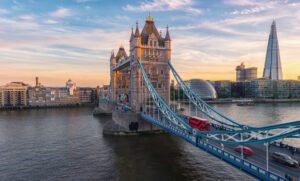
Visitor numbers at the UK’s leading attractions are still almost a quarter lower than before the pandemic, thanks to a perfect storm of Covid, Brexit, energy prices and the wider financial crisis, according to the sector’s trade body.
Figures published on Friday by the Association of Leading Visitor Attractions show that while the number of visits to its sites rose by 69% in 2022 compared with the year before, this was still 23% lower than in 2019.
Bernard Donoghue, the organisation’s director, described the annual increase as “probably as good as we could hope for”, given the unprecedented challenges facing its members, which include the UK’s most famous museums, galleries, cathedrals and parks.
“We as a sector have never been hit by so many variables, which are completely out of our control, all at the same time,” he told Business Matters. “Not just Covid, but also the cost of living crisis, energy costs and the hangover of Brexit.
“Staffing and recruitment is one of the greatest challenges to tourism and hospitality, and some of that great challenge is replacing people … who left during Covid – but partly because of Brexit – to go back to their home countries in the EU or further abroad.
“That whole basket of uncontrollable variables has never hit us like that before. So it’s still remarkable that our visitor attractions are growing, surviving, thriving on a daily basis, in spite of all of that.”
While some attractions, particularly those that are free and those in London, saw strong year-on-year growth, the picture was mixed elsewhere in the UK. The capital saw the biggest growth on average, with visits up by 152%, with Scotland up by 128% and Northern Ireland up 120% on 2021.
The most visited indoor attraction and second most visited overall (after Windsor Great Park) was the Natural History Museum, which saw a 196% increase in visitors to 4.6 million in 2022. The British Museum, up 209% with 4.1 million, moved from sixth place to third.
The National Museum of Scotland, up 199% to almost 2 million visitors, was in ninth place overall. Visitors to Titanic Belfast leapt by 177% to 624,000.
In London, the ongoing scarcity of visitors from China and the far east had been a significant challenge in 2022, said Donoghue, adding that elsewhere, paid-for attractions and particularly those outside city centres had felt the brunt of petrol prices and the wider financial crisis.
“When petrol costs were a real issue, city centres did well, because they could rely on people getting there from public transport. But remote places were being affected by people saying, ‘actually, it’s going to cost me quite a lot of money to drive there.’”
He welcomed the extension of tax relief for museums and galleries in this week’s budget, but called on the government for greater support with energy costs (“the greatest threat to our financial sustainability”), a reduction in VAT for visitor attractions, and a renewed marketing push for overseas tourists.
“I have to say, the global media coverage of the Queen’s funeral and the forthcoming coronation will help that enormously. It will make a difference to those people who are drawn to the UK because of those things,” he said.
Read more:
Visitors to the UK’s leading attractions down 25% on pre-Covid numbers




